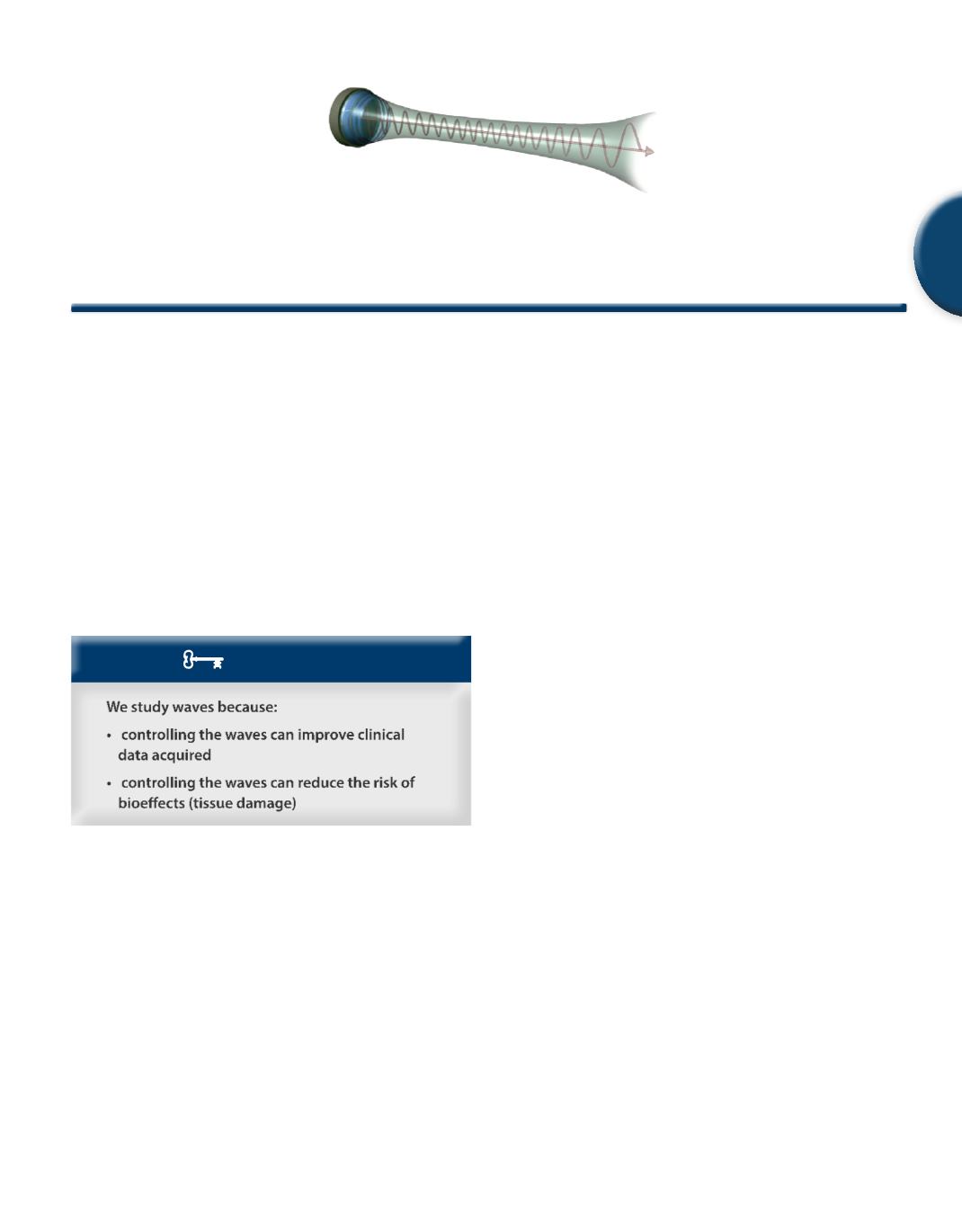
Chapter 2: Waves
7
2
Introduction
I believe it is easier to understand a topic when you first understand
the motivation for learning the material instead of just memorizing
a series of facts and figures. As a result, we will learn this chapter
using an iterative approach. First we will discuss the reasons this
material is important to anyone performing ultrasound related tests.
In Level 1we will discuss waves in general,developing the foundation
for Level 2. In Level 2, many of the same topics will be reviewed,
but this time with specific references to ultrasound,application,and
relation to topics to be discussed in later chapters. In this way, you
will be exposed to the topic multiple times, reviewing and building
a more solid foundation.
KEY CONCEPT
1. The Motivation for Studying Waves
So why do we need to study waves? The simple answer is diagnos-
tic ultrasound is based on how sound waves interact with various
structures in the body. Since changing parameters of the sound
wave can lead to changes in the diagnostic quality of the clinical
study performed, and since changing some of the parameters can
also increase the potential risk of bioeffects (biological changes that
potentially cause harm to the patient),it is useful to discuss the vari-
ous parameters of the ultrasound wave. Specifically, we will need
to know what can be changed by you the sonographer, what cannot
be changed, and how these parameters relate to the quality of the
clinical study and the risk of bioeffects.
Note: Although the risk of bioeffects with ultrasound is very low, the
potential does exist. Bioeffects will be discussed in Chapter 9, and also
throughout the entire text as related topics are covered.
2. Waves
2.1 Definition of a Wave
A wave is a mechanism which transfers energy from one location
to another. If a wave is the result of a sudden impact or impulse of
energy, it is generally referred to as a “shock wave.” When a wave
has a somewhat repetitious source,the wave is referred to as cyclical.
Therefore,awave with a repetitious source can be defined as a cyclical
transfer of energy from one location to another location. The use of
the term“cyclical” is useful since there is a clear indication that the
energy of the wave results in changes that are repetitious. The term
“cycle” refers to a single event or phase, while “cyclical” refers to the
cycle repeatingmultiple times,relatively uniformly. For ultrasound,
we will be concerned primarily with cyclical waves.
Since there are many different forms of energy that can be trans-
ported,there aremany types of waves. For the purpose of ultrasound,
we are primarily concernedwith acoustic (sound) energy. Therefore,
we can reduce the wave topics to cover only to those topics most
directly related to sound waves as apply to diagnostic ultrasound.
2.2 Examples of Waves
We will not need to go into depth about wave types other than
sound waves. However, so as to get across basic principles,
it is instructive to consider other types of waves beside sound
waves. Think about what all of these different types of waves have in
common:
• water in the ocean
• sound
• television signals
• light
• oscillation of a guitar string
• a bunch of people doing the “wave” at Fenway Park
Waves
Chapter 2


